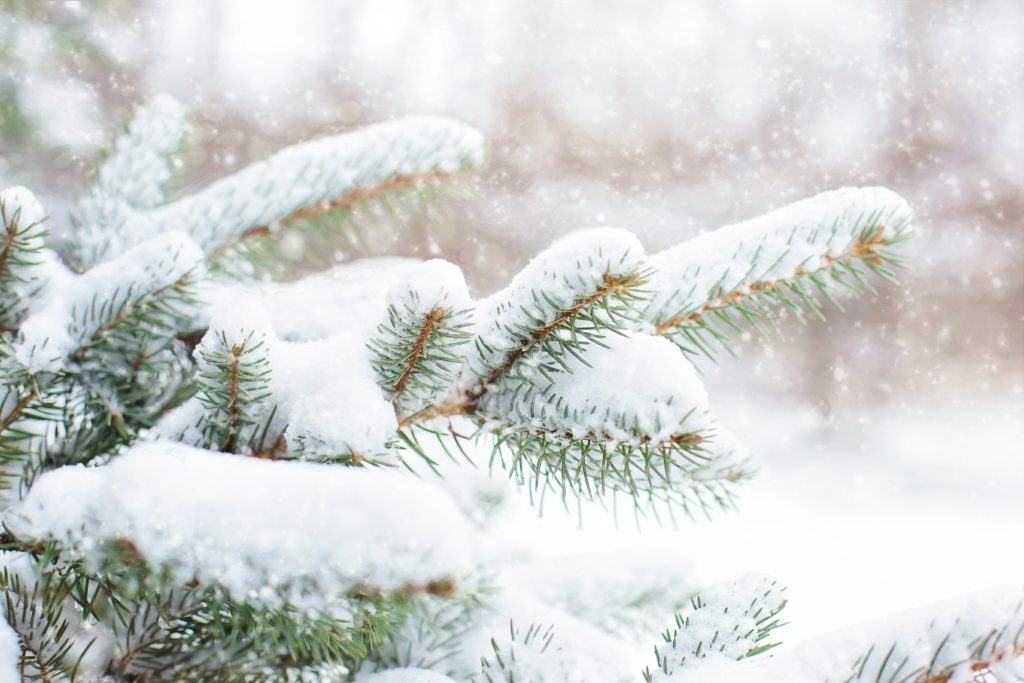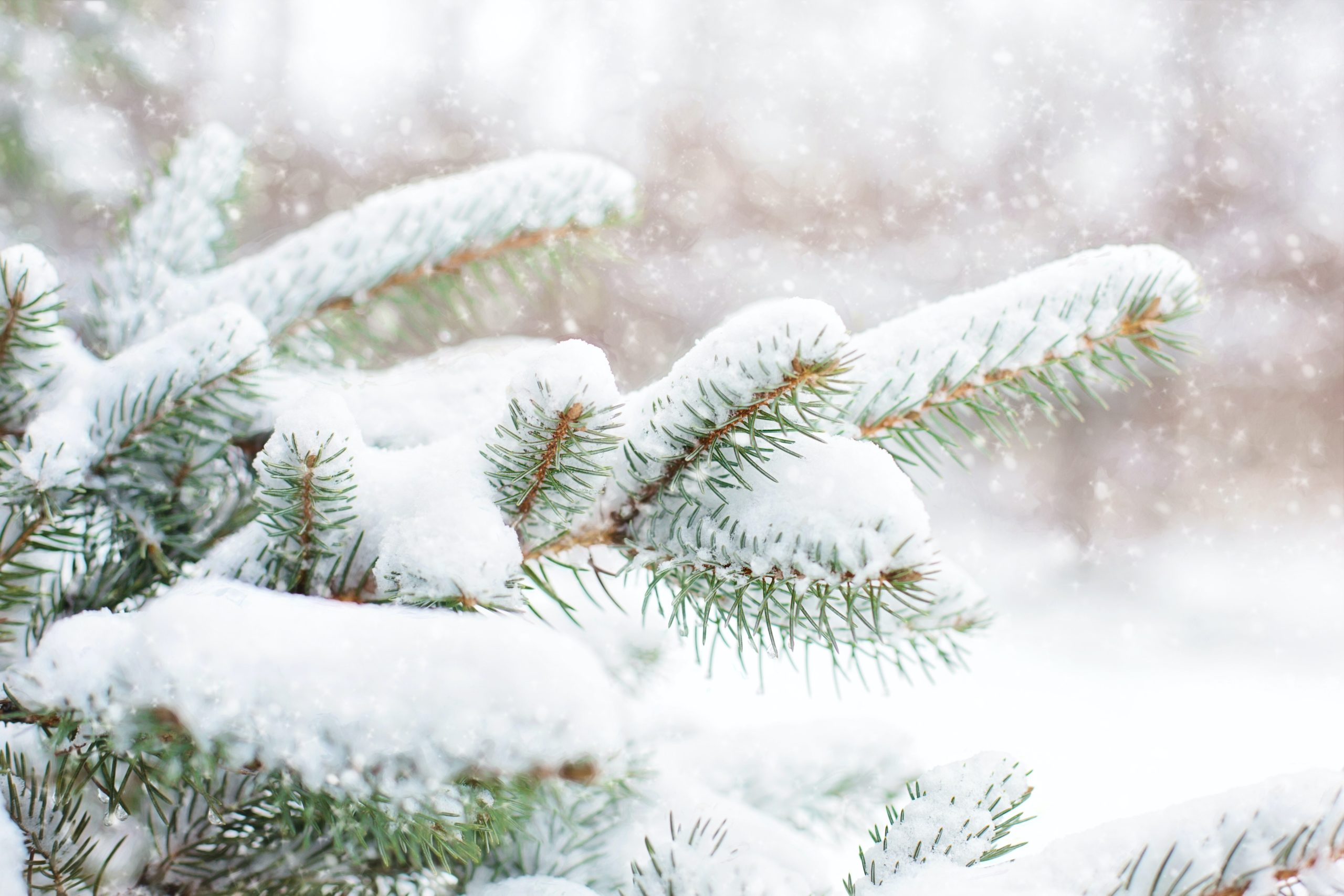
I learned this today. Evergreen trees keep their leaves for longer because they have evolved to survive in colder areas with less yearly sunlight.
An evergreen tree is a tree that doesn’t lose its leaves all at once in the way a deciduous tree does. The leaves do fall off, but when they are old, and not all at the same time. The tree continuously grows new leaves through its life.
We usually think of conifers as evergreen trees, but there are actually many different types of evergreen tree. There are conifers in cold areas, but eucalyptus and a lot of tropical rainforest trees are evergreens. In a tropical rainforest, there is no cold winter or drought, which removes the need for trees to lose their leaves. I’m going to concentrate on coniferous evergreens here.
Both conifers and deciduous trees have evolved to survive and flourish in the environment that they are in. Suffice it to say, if deciduous trees could survive in the environments that conifers exist in, we would find them there.
Deciduous trees have evolved to survive in a temperate climate where the winters are dark but relatively mild in terms of temperature, while the summers have a lot of reliable sunlight. To cope with this, deciduous trees lose their leaves in the winter.
During the fall, the base of the leaf seals off and the dead leaf falls off the tree. The main reasons for this are that there is less sunlight during the winter months, there is more wind and snow, and the water in the leaves could freeze. A large leaf canopy could be a danger.
All trees, both deciduous and evergreen, use energy to grow leaves. Before a deciduous tree sheds its leaves, it takes the chloroform out of them and stores it as sap. This is why the leaves change color. The tree uses this energy store to survive through the winter and have enough energy left over to grow new leaves in the spring. It has to balance the energy cost of growing new leaves with how much energy each leaf will bring in. Trees need energy to grow leaves, but also to respire and live. Deciduous trees have broad leaves in order to capture as much sunlight as possible. More sunlight means more photosynthesis, which means more energy in a shorter amount of time.
Coniferous trees have evolved to survive in areas of much lower temperatures where the winters are much longer and there is less overall sunlight. Deciduous trees in this environment would not have a long enough season to photosynthesize and make energy, which means they would not be able to grow leaves in the following year and they would slowly die.
Conifers have needles. These needles are still leaves, they are just very tightly rolled leaves. This shape helps them conserve water through the winter. They also have a waxy coating which stops the water inside evaporating and, because they are tightly rolled, they can resist the cold and don’t freeze. The needles are also arranged in bundles, which insulates them. They accumulate high concentrations of dissolved cryoprotectants, which lowers the freezing point of the water in their cells.
Conifers have evolved to survive in these conditions by not shedding their leaves. Each leaf is narrower than that of a deciduous tree and can photosynthesize less. However, they make up for this by photosynthesizing for longer. The needles are also usually a darker green than the leaves of deciduous trees, which allows them to absorb more sunlight. Because they keep their leaves all year round, they can photosynthesize all year round. There are times when the temperature gets so low that the water in the cells freezes and photosynthesis stops, but even with this, conifers are able to make enough energy from one needle to be able to grow that needle again when it is old and have extra energy for the tree.
Another reason deciduous trees lose their leaves is to protect them from snow and wind damage. Conifers avoid this by having very tough needles. Their branches also sweep outwards and downwards, allowing snow to fall off. Their branches are much more flexible than those of deciduous trees. If snow accumulates, it pulls the branch down until the snow falls off and the branch springs back.
So, conifers don’t lose their leaves all at once, but slowly, when the leaf is too old to effectively photosynthesize anymore. They grow new leaves continuously throughout their lives. Each needle is smaller, so they photosynthesize less than a broad leaf, but the tree makes up for it by photosynthesizing for longer. The needles have evolved to survive very cold temperatures and the trees have evolved to survive strong winds and heavy snow. And this is what I learned today.
Photo by Jill Wellington from Pexels
Sources
https://en.wikipedia.org/wiki/Evergreen
https://home.howstuffworks.com/evergreen-trees-dont-shed.htm
https://www.mentalfloss.com/article/72975/why-do-some-trees-keep-their-leaves-winter
https://en.wikipedia.org/wiki/Conifer
https://sciencing.com/photosynthesis-pine-trees-5851690.html

